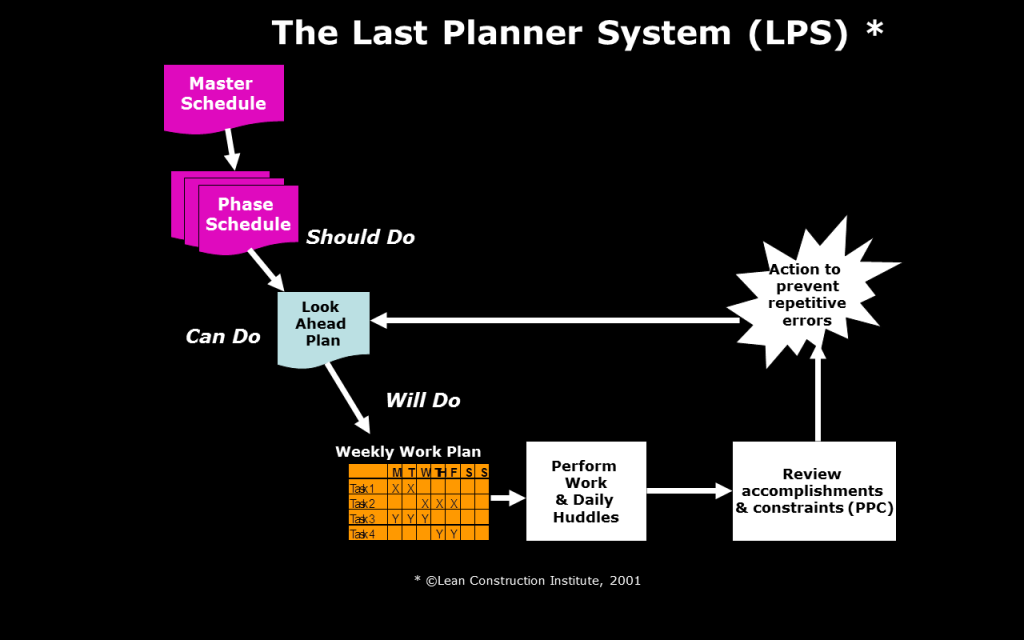RFP Proposal and Contract Language for using Last Planner® in Design
This blog post discusses the use of Last Planner® in Design, and the language used here can be easily incorporated into Requests for Proposal or even Design Contracts and Consultant contracts (consult your own attorney).
The Last Planner® In Design
The use of The Last Planner® in design couples naturally with the use of Target Value Design, providing a proven Lean methodology for the team to collaboratively break down design tasks into smaller batches and efficiently execute design. During the design project kick-off, a milestone level pull plan will be performed by the project team that will validate the design milestones in this proposal, and then a phase pull plan will be developed by the design cluster members to break down design tasks into smaller batches. Great efficiency is gained by working in these batches that are far smaller than the standard Schematic, Design, and Construction drawing sets due to greater flexibility in delivering dates and not constraining unrelated design subcomponents to the same delivery date.
These batches determined by the component groups will be the roadmap for how and when to perform design subcomponents are part of the Target Value Design. The project Big Room will also be important here as a place where the team comes together regularly to update their pull plan and perform phase pull plans for additional phases of design.
Phase Pull Plans, Look Ahead Planning, and the Make Ready ProcessPhase Pull Plans, Look Ahead Planning, and the Make Ready Process
During Phase pull plans, team members plan backwards from a major milestone. We use slightly different language from LPS in construction, specifying, “The Get”– what is needed to do the task; “The Do”– what work is to be done; and “The Give” – who we give the completed task to. Working backwards in a group is simple yet powerful, this subtle difference has a profound impact on schedule, eliminating the waste associated when the Do-er overdesigns or presupposes the wrong need. Some of the major elements:
- “The Give,” the recipient of the task (NOT the Do-er), specifies what’s needed for the task, their conditions of satisfaction.
- Negotiate needs and time to complete tasks.
- Make person-to-person commitments between team members – example: “Jacky commits to Joe” rather than “Architect commits to Builder”
Team members will meet every two weeks (as opposed to weekly with LPS in construction) review completed design work and upcoming milestones, identify and remove constraints, and then make new commitments for upcoming work. The Pull Plan drives project decision making, identifying the ‘last responsible moment’ and getting group buy-in. While all in the group do not share in the decision making, all understand the need, outcome, and impact. These sessions will also be heavily influenced by Big Room integration events, where all relevant groups gather to winnow and decide on design sets.
Planned Percent Complete is tracked for the group and should increase over time as the team members’ trust in each others ability to make reliable promises grows. This reliability and predictability greatly reduces conflict and enables faster design development.


